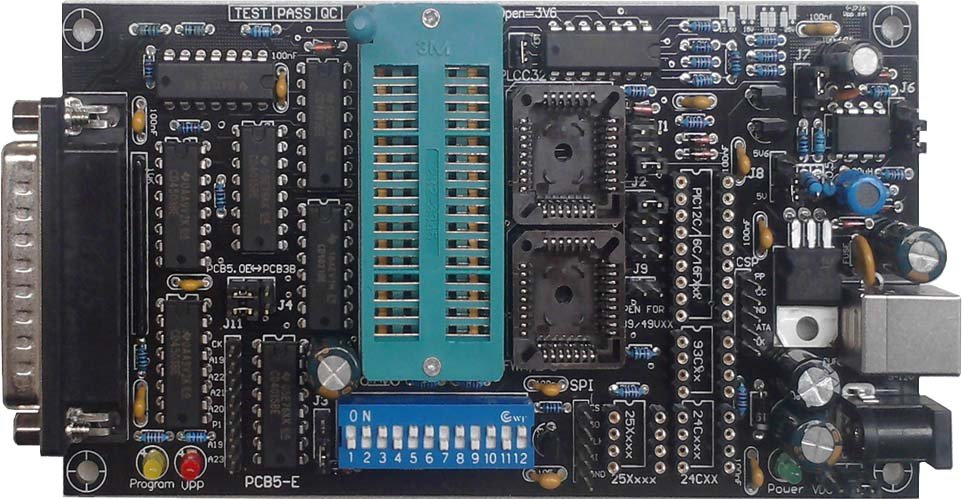Willem Pcb50b Software Download
Enhanced/Dual Powered
Willem EPROM Programmer
It supports most of PIC chips. And it works with JDM programmer, Willem programmer and other programmer: Download here: DOS 0.996 for Willem: 2001: 4757: DOS version Willem programmer software. The number of chips supported is not updated since 2001. Download here: WinPIC800 V3.62: 2007-11-21: 7451: JDM PIC programmer software: Download here. Willem Eprom Pcb50 Software Download Average ratng: 3,8/5 9506 votes Note. The remainder of this post below is still very important, but I’d like to make sure everyone has the most up-to-date information about compatibility between the different DLLs and parallel port cards out there.
User Guide
Main Board / Cables
Main Board PCB3.5
Tags:, willem, software, version, 0.97, downloads dw01 0.97e People Also Bought add device x24C01,AT24C01,CAT24C01B ( 7 bit shift address) (untest) modify menu PIC New Algorithm. Willem Eprom Programmer (14) Willem USB Programmer (1). $51.50 $33.00 A51 Package 1. Willem EPROM Programmer PCB50B© + 5PCS x PCB SSOP8, SOIC8. Willem Programmersivava is the manufacturer of electronic appliances and the distributor of Willem EPROM Programmer online through the website by Mr. Anoocha Carnaponpiputn from Thailand.


Software Download Sites

Main Board PCB4E
Main Board PCB5.0
Main Board PCB5.5C

Parallel Data Cable (Printer extension cable, with male-female 25 pin connector, and pin to pin through) | A-A type USB cable(for power) |
Optional Items:
ATMEL 89 Adapter | ATMEL PLCC 44 Adapter | TSOP 48 Adapter |
FWH/HUB PLCC32Adapter | PLCC32 Adapter | SOIC Adapter(Simplified) |
On-Board | On-Board | |
AC or DC Power Adapter (9V or 12V, 200mA) | SOIC Adapter(Professional) |
|
Installation Steps
(Note: the LPT port of PC MUST set to ECP or ECP+EPP during BIOS setup. To enter the BIOS setting mode, you need press 'Del' key or 'F1' key during the computer selftest, which is the moment of computer just power up.) Software Version To Use | |||
| |||
The software interface: | |||
Hardware Check | |||
PCB3.5/PCB4E
PCB5.0 PCB5.5C Note: the Vcc setting jumper only has effect when you are using AC adaptor as power source. For the USB power only 5V Vcc is available. For the PCB5.5C, set DIP steps: 1. press DIP Set button twice to check current DIP bit position. Then set it again for ON or OFF. 2. press DIP Bit shift button to shift the DIP bit position to where need to set. And then press DIP Set button twice to check current DIP bit position. Then set it again for ON or OFF. 3. Repeat those steps till all DIP bit ae set same as software indicated. For PCB5.5C voltage and Special chip selection: 1. Put back the safety jumper. 2. Press the voltage button and hold for 1 second, the voltage LED should move to next. Repeat till desired voltage LED light up. 3. Press the chip selection button and hold for 1 second, the chip LED should move to next. Repeat till desired LED light up. 4. Remove the safety jumper to lock the selected voltage and chip selection DIP Switch (PCB3.5, PCB5.0) When programming one chip, follow the program prompt to set DIP switch . |
free. software download
The screen : | ||||||||||||||||||||||||||||||||||||||||||||||||||||||||||||||||||||||||||||||||||||
Steps:
| ||||||||||||||||||||||||||||||||||||||||||||||||||||||||||||||||||||||||||||||||||||
